Description
Winter squash is an amazing, long-lived, productive, nutrient dense food source. Winter squash is a broad-term descriptive regarding the hardness of the fruit skin, indicating that it may be stored for long periods of time. For a tropical climate, Cucurbita moschata and Cucurbita maxima are the preferred growing species due to their vigor and hardiness to pests. These squash are sprawlers; vines can grow over 30 feet long. Tendrils provide an ability to climb if allowed, and vines typically produce a good amount of biomass in the form of large, broad leaves to outcompete unwanted plants. There are many varieties, colors, shapes and sizes of fruits. I’ve grown fruits as small as a pound and as large as twelve pounds. The immature fruits, young tender growing tips, seeds and the flowers of the plant are also edible. Fully mature fruits will last a few months in storage. These plants are vigorous and tasty!
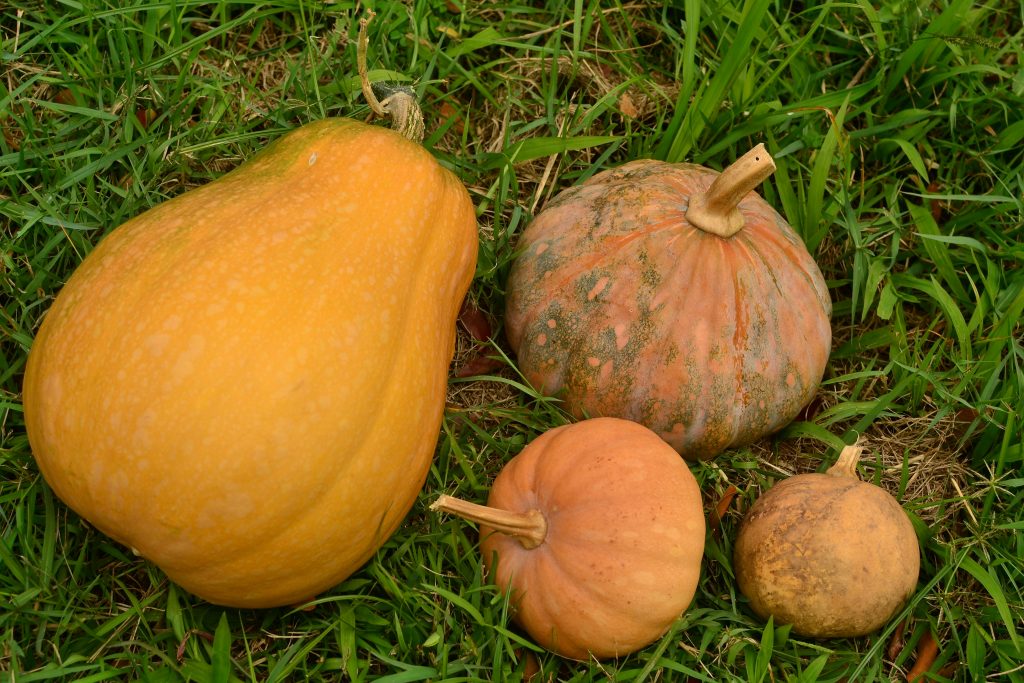
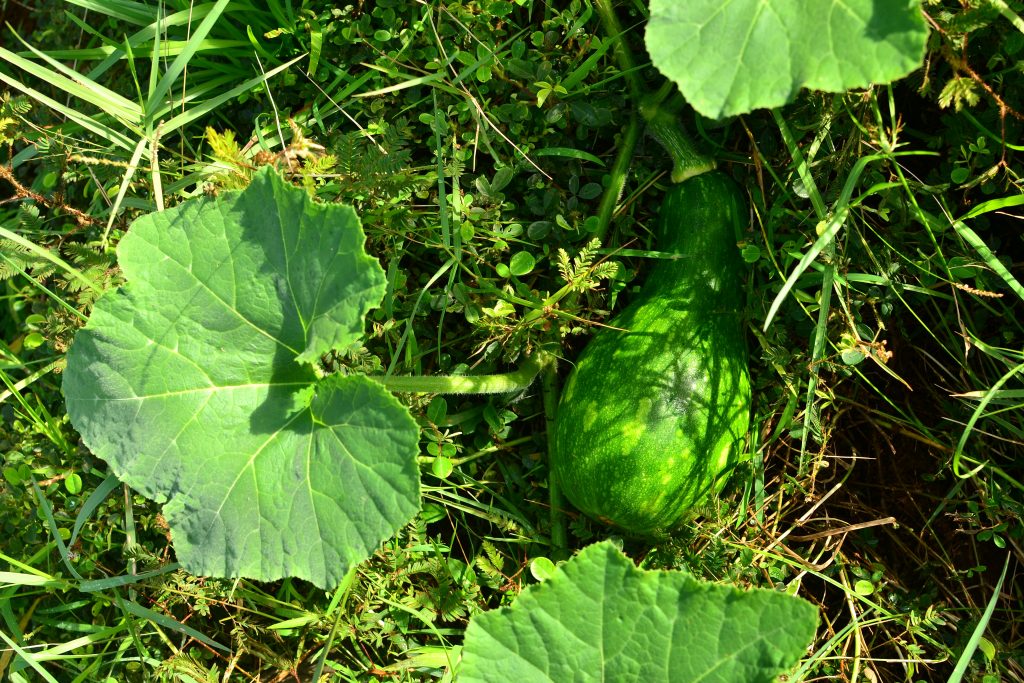
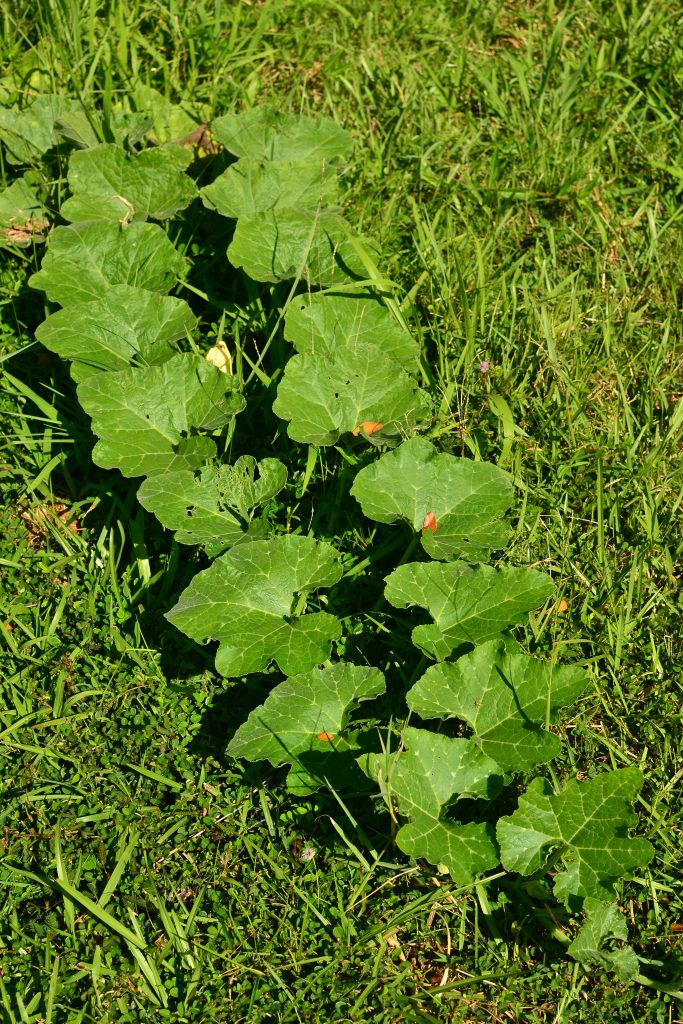
Propagation
Winter squash is typically grown from seed. Open a ripe fruit and put the seeds into the ground, preferably direct sown in the place where you want it to grow.
Cuttings with three nodes and a small leaf are sometimes also used for propagation.
Care
Heavily amend the site you wish to grow the squash. Add as much manure, compost, fertilizer and mulch as you can before planting seeds. Squash are very hungry. The more food you supply to them at the time of planting, the more vigorous they will be. (Most literature I’ve read says there is no need to feed them while growing, just at the time of planting). Squash vines are happiest in full sun or light shade. Allow a large space to sprawl, or manage weekly and aim into desired areas. I’ve even seen squash growing extremely well climbing to the top canopy of citrus trees and producing large squash dangling in the air!!!
Male and female flowers are separate, but on the same plant (monoecious). Male flowers typically bloom alone for the first few weeks, and then female flowers emerge. A lot of the time, regular garden pollinators will pollinate the flowers; however, hand pollinating increases the chances of fruit set.
Usually vines tend to produce one squash at a time, unless they root at another node along their vine, which allows them to tap into more nutrients and sustain more fruits.
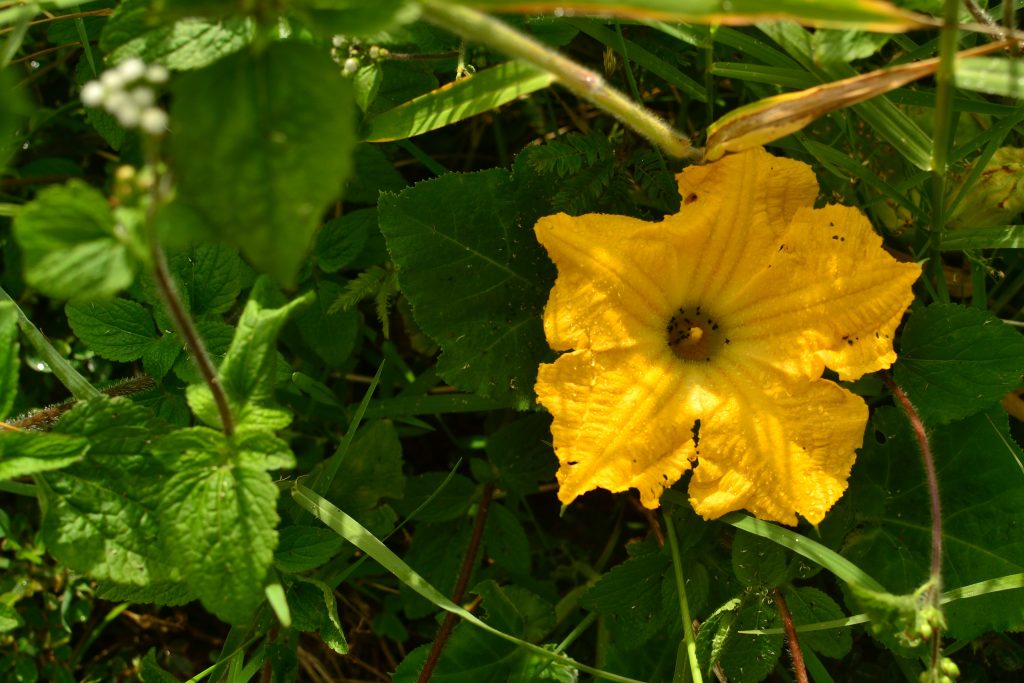
Male Flower
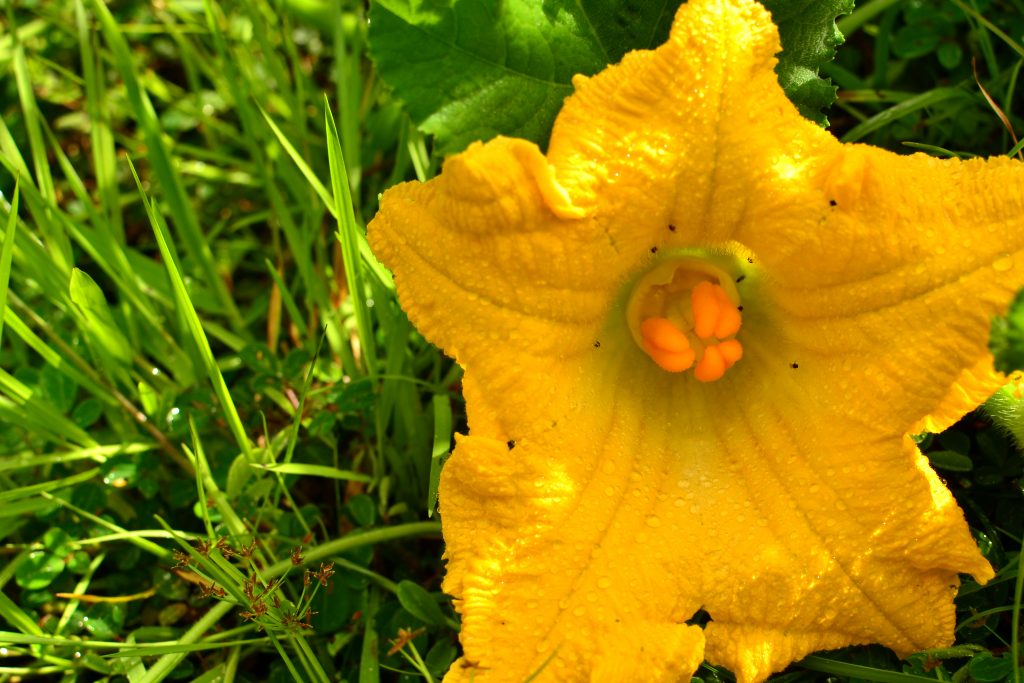
Female Flower
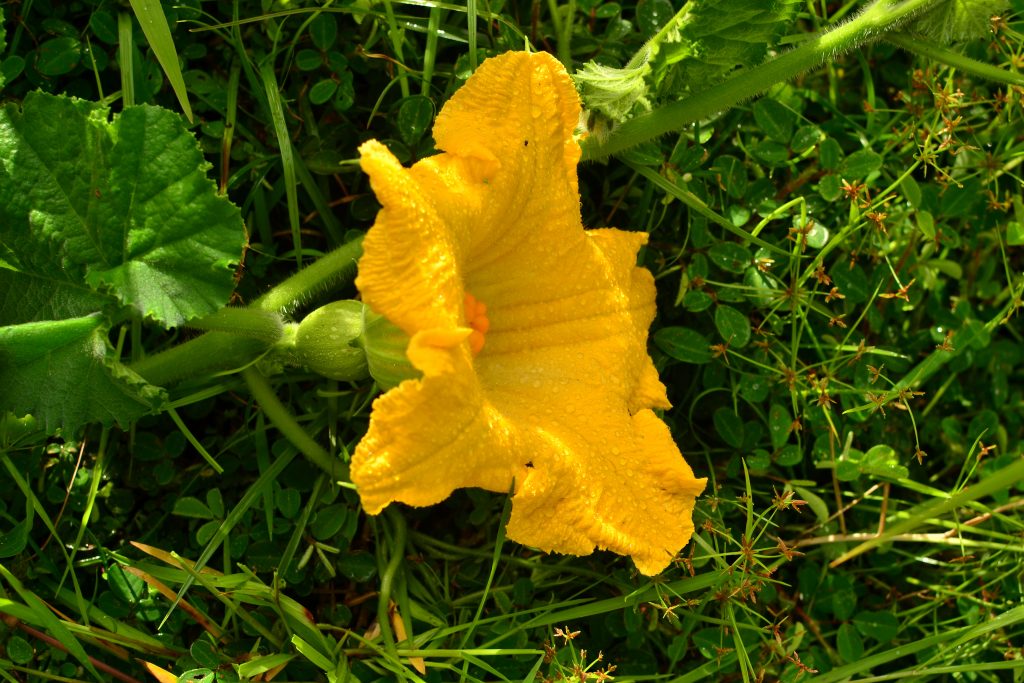
Female Flower. Notice the tiny unpollinated fruit attached to base of flower
Eating
Flowers and vine tips are edible; they should be picked early when very tender.
Immature fruit is best picked after the flower has fallen off.
The tendril closest to a fruit will brown when the fruit is mature and ripe. Usually the squash will change color and turn from a greenish to a yellow-tan color. Ripe fruits may be eaten with or without skin, and cooked by baking, roasting, boiling, steamed, or sauté.
Seeds may be cooked, or made into an oil extraction.
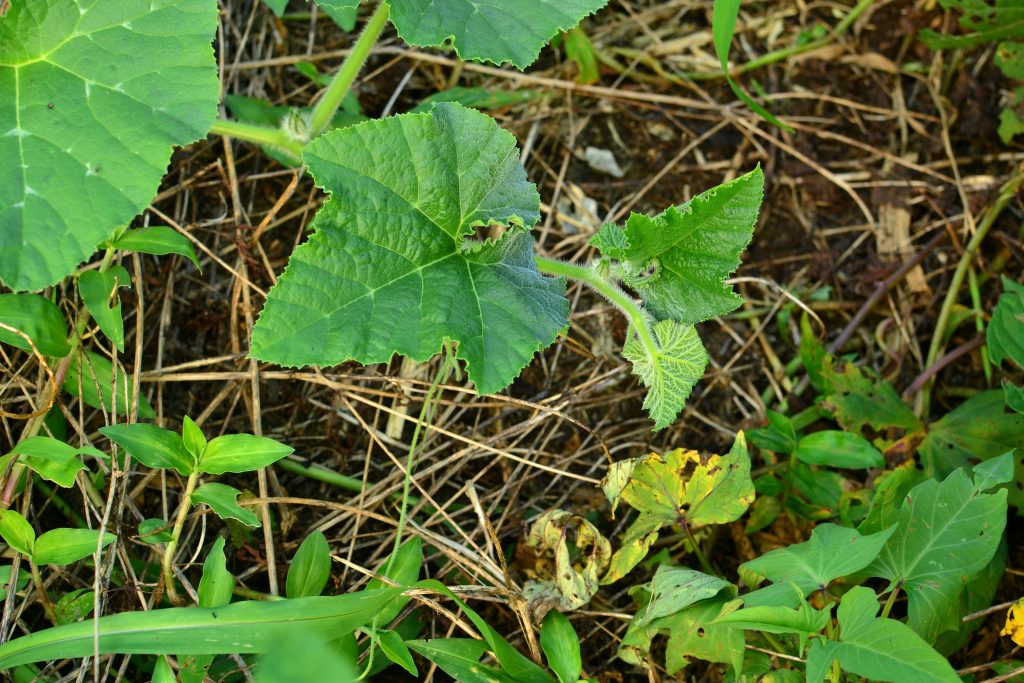
Tender vine tips ready for eating
Where to obtain planting materials
For the best locally-adapted genetics, it is most appropriate to collect fruits for eating from the local farmers’ market. A lot of time, most squash the vendors sell is homegrown by that vendor; you should ask if that’s the case. Then go home, cut it up, save the seeds, eat the food. If it is delicious (usually most are!), then plant those seeds. You may never be able to identify the squash itself, unless the vendor tells you the variety, but you will have good genetics.
Alternately, buy a seed pack from a seed company. But understand, it will potentially be less productive and more susceptible to various tropical pests. Remember to stick to the preferred species.
My Garden
Besides these past few months, I’ve had pretty limited success with growing winter squash. The majority of my previous fruits came from volunteer vines from my compost piles; anywhere I intentionally planted seeds, the keiki never got vigorous. First, it was the slugs/snails eating all the new growth, then the caterpillars boring into the immature fruits before fruit set, then the lack of sunlight, and finally, the lack of pollinators. The simplest solution for all these issues is adding more fertilizer; the more vigorous the plant, the more likely it is to put off more flowers to be potentially pollinated. I now have squash growing in a few different areas, and as I do my rounds, I regularly see little fruits growing! This is an incredible food source that basically maintains itself once it is going strong. More winter squash is the answer to a self-sufficient lifestyle.
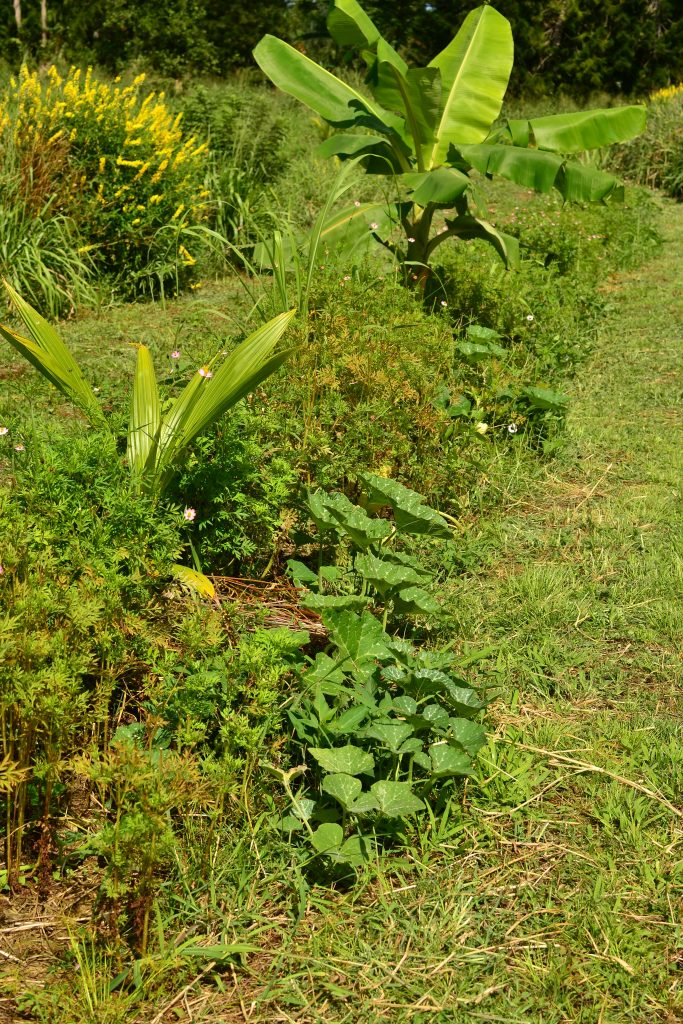
Squash grown with: coconut, banana, sugarcane, cosmos, blue basil, bush basil, edible hibiscus, Plectranthus barbatus, and coleus
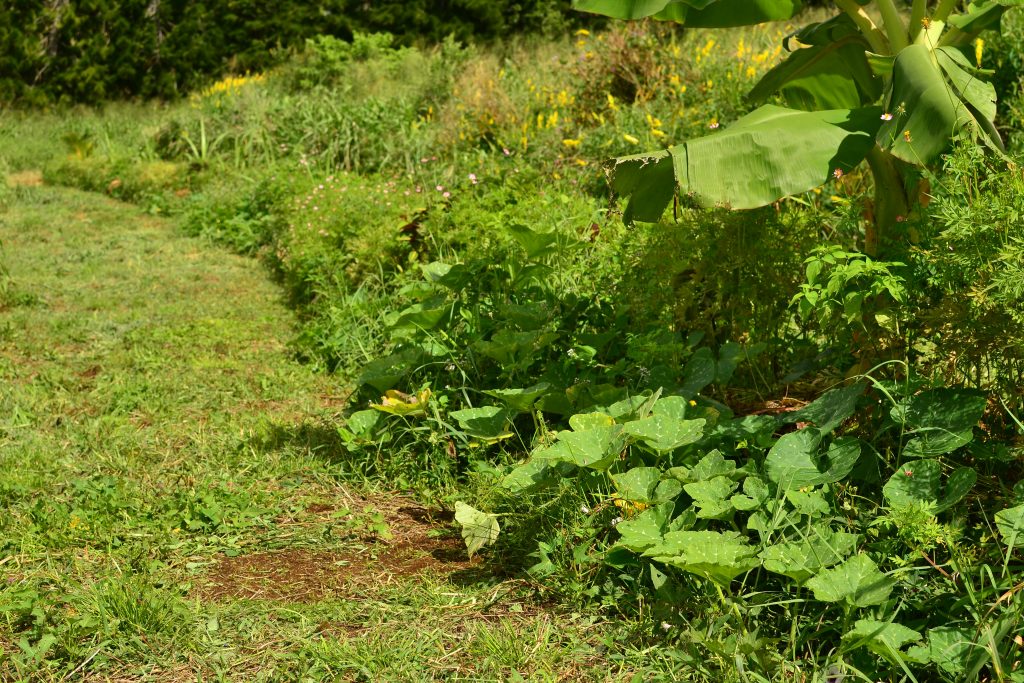
Squash grown with: coconut, banana, sugarcane, cosmos, blue basil, bush basil, edible hibiscus, Plectranthus barbatus, and coleus
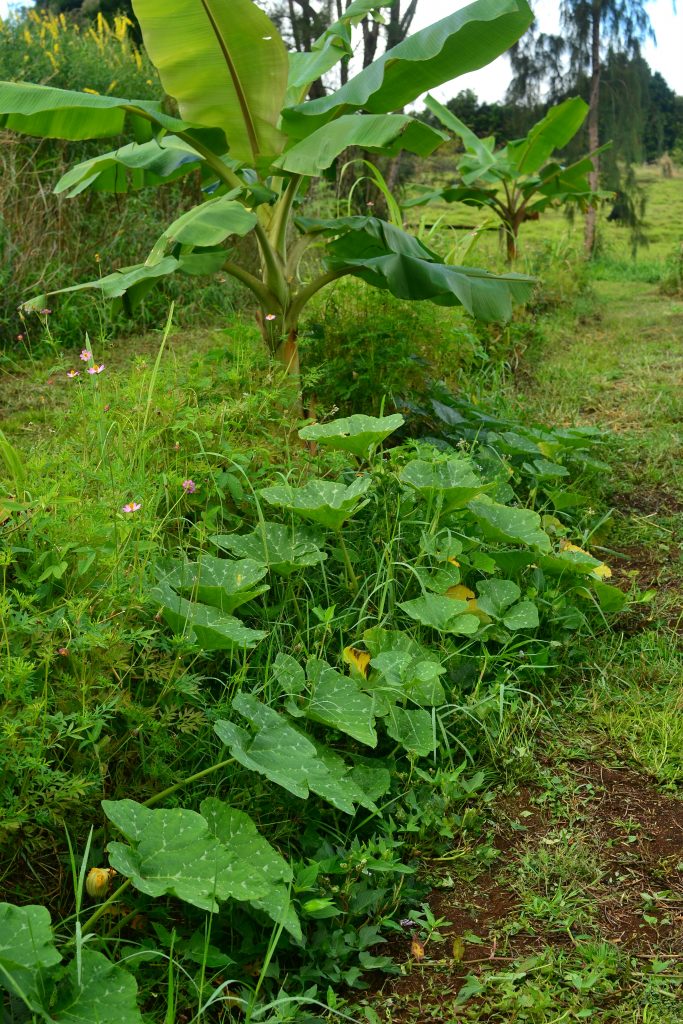
Squash grown with: coconut, banana, sugarcane, cosmos, blue basil, bush basil, edible hibiscus, Plectranthus barbatus, and coleus
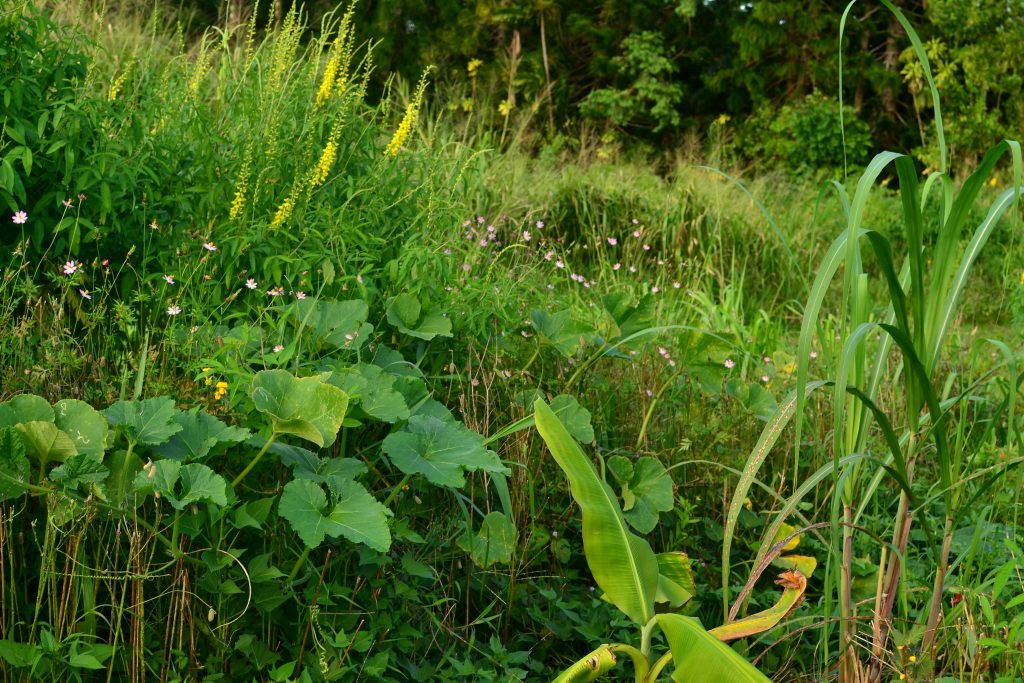
Squash grown with: banana, sugarcane, hot peppers, chico sapodilla, papaya, sweet potato, crotalaria, and cosmos
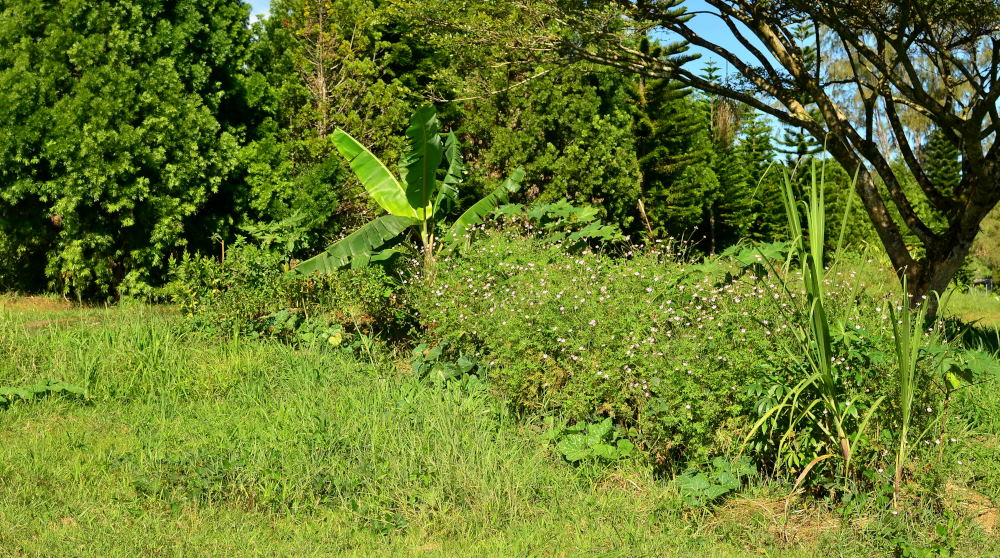
Squash with: Thai Basil, Catnip, Amorphophallus konjac, Shallots, Tithonia rotundifolia, Ginger, Boesenbergia rotunda, Sesbania javanica, Pigeon Pea, ele ele banana, Broadleaf Papaya, Cosmos, Sugar Cane, Kava, Kalo, Jobs Tears, Cassava, Alternanthera dentata
Happy Gardening!
My Hawaiian pumpkins aka kabocha grows great with long vines and huge green leaves. They set down new roots at most nodes. My problem is there are very few female flowers, sometimes none at all. I’ve grown a couple dozen plants over the last three years. Is there a way to encourage more female flowers?
good question. but unfortunately i do not have an answer. it kind of seems they go through phases, they will set the male flowers, then the female. then usually wait for a while and do it again. im not exactly sure why. i think i was reading they usually set female flowers from nodes 20-30. maybe if they grow longer they skip the female flowers later? ive noticed if i accidentally cut the vine they will go through the flowering phases again. maybe that kind of ‘resets’ them?
What elevation? I’m north East 2000 ft… little wet here. Any suggestions for companion plants on hillside garden protected by weed blocker that seems very wet from roof run off? Mahalo..
Ps- where do you get seed? Have any great generation seeds you’d wanna share?
im at about 800′. 150 inches of rain a year. you could grow squash on mounds in that environment. do some big mounds at the top of the hill and let them sprawl down. i bet theyll take the whole hillside. i have a 4′ berm and at the base of the berm is a waterway, the squash seem to grow and produce just fine in the slow moving water. sometimes it will be waterlogged for a day or two. the fruits even develop just fine sitting in the water. youll want to keep the original planting zone out of the water though (mound it). could also do nastiritums, okinawan spinach, taro, possibly sweet potato mounded, im thinking of trailing things so they can sprawl and fill in space over the weed mat. also bananas lemongrass and sugarcane love wet. id check the farmers market for a squash and then plant those seeds. i usually plant my seeds as soon as they come out of the fruit
The few number of female flowers MAY be due to low light intensity. Just a guess. They are naturally less able to accumulate carbohydrate under cloud cover, and this is the limiting factor for tomatoes here as well in Hilo.
my butternut squash forms and gets 2-4 inches then turn brown and fall off. Can’t figure it out.
Most likely caterpillar damage. We use BT sometimes on flowers before they open